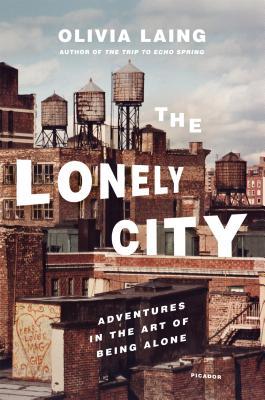
The Lonely City: Adventures in the Art of Being Alone
Book Description
What does it mean to be truly alone in a city that never sleeps? In "The Lonely City," Olivia Laing weaves a haunting tapestry of isolation and artistry, exploring the lives of iconic figures who navigated loneliness amidst urban chaos. With vivid prose, she delves into the heart of disconnection, revealing how solitude can become a canvas for creativity and self-discovery. As she traverses the streets of New York, the book illuminates the beauty found in being alone while grappling with the universal human desire for connection. Can loneliness be the spark that ignites a deeper understanding of ourselves and the world?
Quick Book Summary
In "The Lonely City: Adventures in the Art of Being Alone," Olivia Laing explores the intricate relationship between loneliness and creativity through her own experiences living in New York City and the lives of celebrated artists like Edward Hopper, Andy Warhol, and Henry Darger. Laing investigates how urban isolation shapes personal identity, describing how feelings of disconnection can be both painful and transformative. Through sensitive inquiry and vivid storytelling, she uncovers how solitude compels artists to create and helps illuminate universal truths about vulnerability, longing, and resilience. The book is a profound meditation on alienation, the unique challenges of city life, and the unexpected beauty that arises from being alone.
Summary of Key Ideas
Table of Contents
The Transformative Nature of Loneliness
Olivia Laing begins her exploration of loneliness by grounding it in personal experience. Relocating to New York after the end of a relationship, she describes the acute sense of isolation that can pervade even the densest, most vibrant urban environment. The city amplifies aloneness, sharpening sensations of being both invisible and hyper-exposed. Laing uses her solitary wanderings as a lens to scrutinize the nature of loneliness—not simply as absence, but as an emotional presence that can color perception and alter one’s sense of belonging.
Art as a Response to Solitude
The book seamlessly weaves Laing’s narrative with biographical portraits of artists who channeled their loneliness into creative expression. She delves into the worlds of Edward Hopper, whose paintings capture the estrangement embedded in city landscapes; Andy Warhol, whose outsider status defined much of his persona and work; Henry Darger, the reclusive janitor-artist; and David Wojnarowicz, who raged against the erasure faced by queer people during the AIDS crisis. By examining their struggles with isolation, Laing demonstrates how loneliness can fuel artistic vision and offer new ways of seeing.
Urban Isolation and Identity
Laing interrogates the paradox of urban life: how cities teem with people, yet foster profound solitude. She reflects on the alienating architecture of New York—skyscrapers, gridded streets, lonely apartments—and its impact on identity, particularly for those who feel marginalized or invisible. The city’s pace and anonymity enable both anonymity and the ache of being unseen. Through these observations, Laing highlights the structural and societal factors that contribute to communal disconnection, inviting readers to consider how environments shape emotional realities.
Longing for Connection
Yet, the narrative is not only about despair; woven throughout is the persistent longing for connection. Laing acknowledges the pain of unmet intimacy while celebrating moments of brief, unexpected communion—be it a fleeting conversation, a shared glance, or the act of viewing art made by another lonely soul. These moments demonstrate a universal human drive to be recognized and understood, even by strangers, and emphasize how art bridges the gap between isolation and empathy.
Finding Meaning in Disconnection
Ultimately, "The Lonely City" suggests that loneliness, while often stigmatized and feared, can be generative. Laing proposes that embracing one’s solitude enables a deeper understanding of self and others. In finding beauty and meaning amid loneliness, individuals can cultivate compassion, creativity, and resilience. The book becomes an invitation to accept and explore solitude—not only as suffering but as an opportunity for transformation and profound insight into what it truly means to belong.
Download This Summary
Get a free PDF of this summary instantly — no email required.





